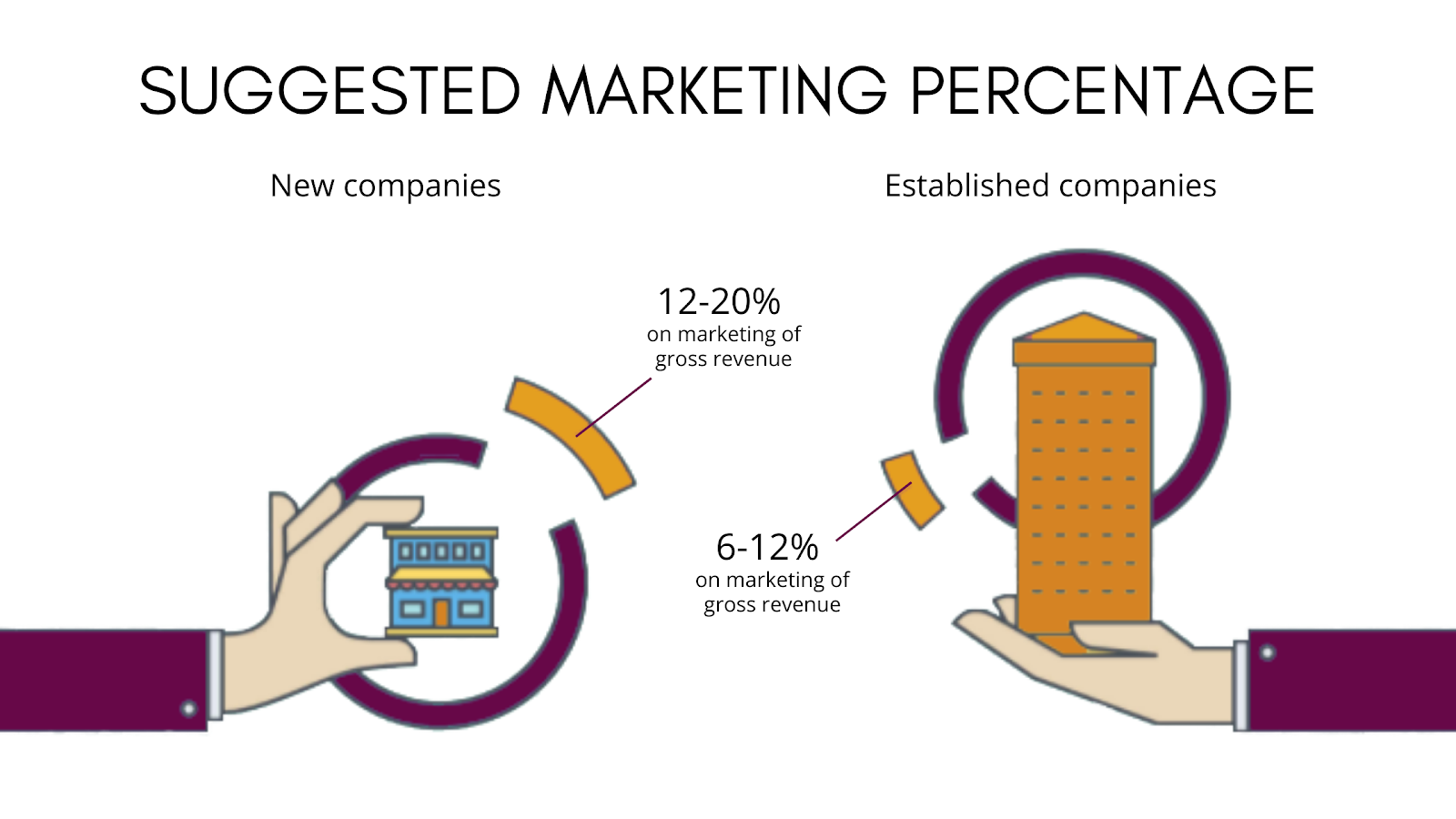
Subscribe to our newsletter!
We don't spam. You will only receive relevant and important tips for you and your business.
Unsubscribe anytime.
If you run a small business, your marketing budget isn’t just a line item—it’s fuel for growth.
Spend it wisely, and you generate steady leads and predictable revenue.
Spend it poorly, and you end up with activity that looks busy but doesn’t move the needle.
We'll break down the typical marketing budget for small businesses, explain how to spend your marketing budget, and show you how to prioritize channels based on real outcomes, not trends or guesswork.

All small businesses spend a percentage of of annual revenue on marketing. But what exactly is the right percentage to invest? Well, it varies.

Before choosing channels, answer this one question:
Your answer determines how your budget should be split.
Most small businesses need all three, but not equally.
Search engine optimization (SEO) is the process of optimizing your website so that search engines will recognize it as authoritative and relevant to users. SEO consists of on-page and off-page SEO, which includes optimizing elements such as page titles, headers, and meta descriptions, writing guest blogs, and link earning.
Following good SEO practices not only helps the search experience but also helps improve the user experience and performance of your site. The goal is to keep users engaged and on your site longer to help search engines and visitors see your site as authoritative, useful, and user-friendly.
Why it matters
Best for
Pay-per-click (PPC) ads are an excellent way for you to drive valuable leads for your business. PPC is an online advertising model in which advertisers pay each time a user clicks on one of their online ads. According to Unbounce, users who arrive at a retailer's site from paid ads are 50% more likely to convert than organic traffic.
Why it matters
Watch out: Paid ads without tracking often look successful but quietly lose money.
An important step to ranking on Google is to create relevant, useful content. Content doesn’t only include written articles. Content marketing encompasses many tactics including video, podcasts, infographics, downloadable guides, and email.
Why it matters
Content includes:
If you don’t measure outcomes, you’re guessing.
The most important metrics are simple:
How you allocate your budget can be determined by measuring the return on investment (ROI) for each tactic in order to prioritize your investments.
Return on investment (ROI) is a measure of how effective your investments are at generating income. This measurement can help you determine how successful your marketing campaigns are. To calculate ROI, first subtract the cost from the revenue and then divide this number by the cost of the investment.

However, determining one overall marketing ROI benchmark is challenging because all marketing tactics are different. What's considered a "good ROI" can vary based on the type of marketing strategy, your distribution channels, and your industry.
Here is a formula created by Hubspot to measure marketing ROI:
[((number of leads x lead-to-customer rate x average sales price) - cost) ÷ cost] x 100.
The more competitive your market and the faster you want to grow, the more you should expect to invest.
There is no single “perfect” marketing budget, but there is a smart way to spend one.
That’s how small businesses stop wasting money and start building momentum.
Looking to optimize your digital marketing strategy?